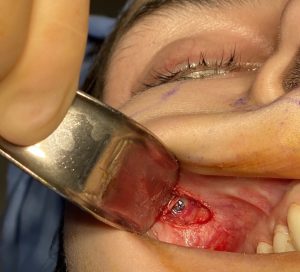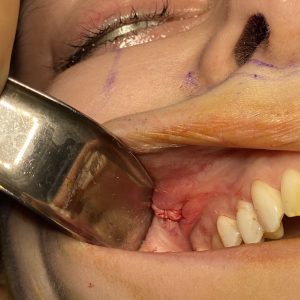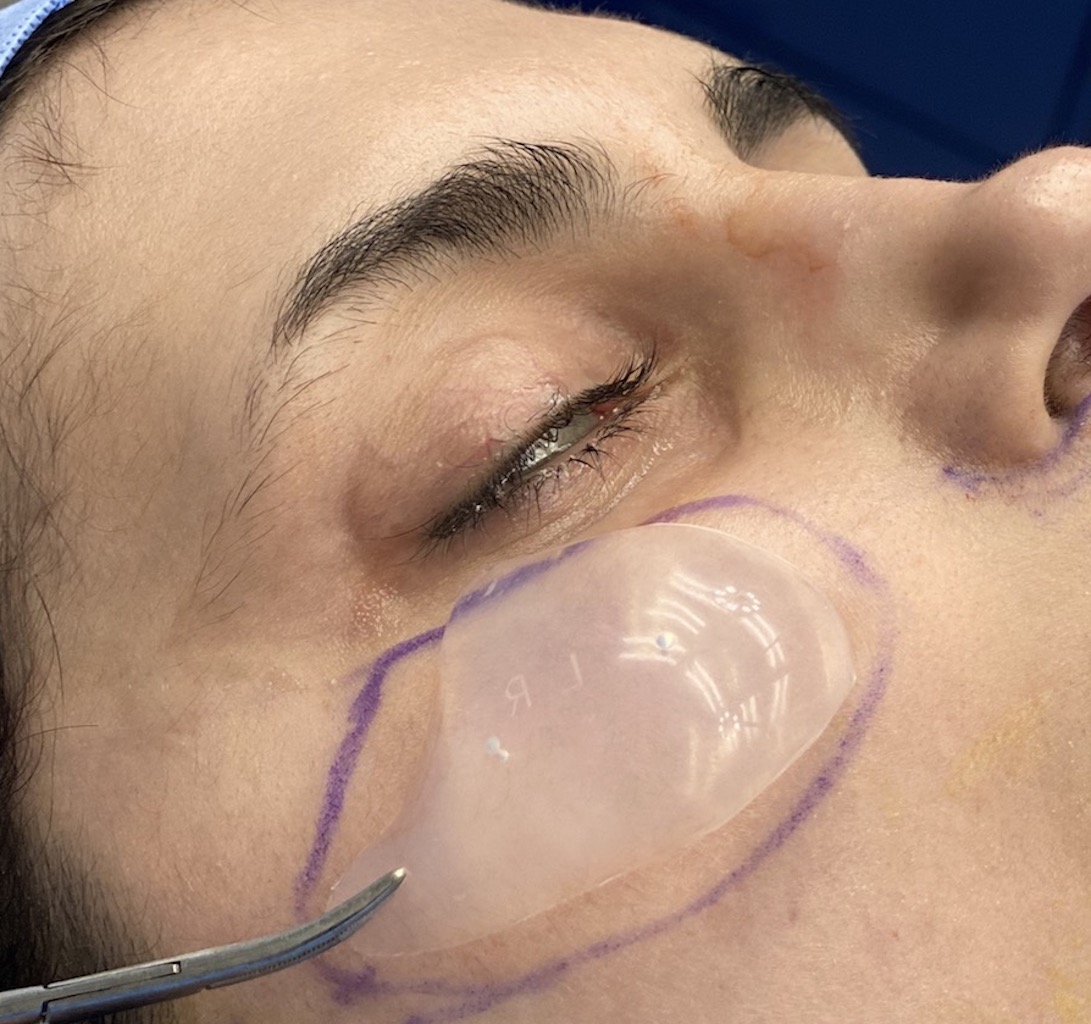Cheek implants have been around for over fifty years but despite this long duration they are few techniques described as to how to place them. Most cheek implants are placed through an intraoral approach which is the most direct line of access to where they are typically placed. In watching surgeons do the procedure I frequently see a low horizontal mucosal incision under the upper lip which is moderately long. Then a wide subperiosteal pocket is dissected across the face of the maxilla up over onto the main body of the cheekbone. While this creates wide open access to place the implant in an unobstructed manner it is actually not necessary and exposes the implant than increased risk of oral contamination as well as exposure should the wound closure breakdown.

Interestingly sweeping down onto the masseteric fascia is frequently associated with a sudden release into this tissue plane.This is actually the same tissue plane in which a deep plane facelift is done. In essence a properly placed cheek implant provides an anterior deep plane lifting effect which will float on the top surface of the implant since it has been released.


The placement of standard cheek implants in a female can be done very effectively through a small high intraoral incision with minimal bleeding. By keeping the incision ‘high and small’ the risks of infection and wound dehiscence are lowered.
Dr. Barry Eppley
Indianapolis, Indiana



